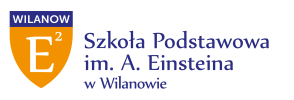English
Language learning is based on CLIL – Content and Language Integrated Learning/Integrated Language and Object Teaching. CLIL differs fundamentally from any typical method of teaching English as a foreign language. In contrast to traditional language classes, CLIL involves teaching a subject through a foreign language. Therefore, a foreign language becomes a tool for a child to learn about the world rather than a goal in itself. CLIL-based language method is oriented on children's own interest in learning English as means and incentive for describing the surrounding world: music, information technology, film, stories. CLIL develops children in a range of areas to facilitate their path around all the diversified topics which are discussed at school.Our CLIL methodology is based on a few basic assumptions:
- Task-Based Language Teaching (TBLT) – a child performs tasks in the language they are learning. All exercises are performed for a certain purpose, e.g. to understand the intricacies of respective tenses in the language. Teachers stay in touch with students and speak English to facilitate learning of new words, phrases and tenses.
- Full Language Immersion – learning through a foreign language only.
- English for Fun – a child grasps the language based on play & learn activities. Classes are made appealing to a child and bring satisfaction through knowledge so that children proactively engage and deep dive into English.
- Living English – children can experience how English is not a school subject only but more a way to communicate with the rest of the world, other people and diverse cultures.
Engage & Interact – a teacher has a task of making a child involved in the learning process. A child is able to absorb far less whenever feeling bored with a class. Hence we implement use appealing and interactive teaching methods, including latest technology, to help children become an integral part of the class. Throughout the week children have from five up to fifteen classes of English. Language level evaluations are carried out at the start of the year. Then the teacher together with a native speaker and an English language teacher decide to sign up a child for the Cambridge exam. Once passed the appropriate certificate is awarded: YLE, KET, PET, to show the child's mastery of English gained thus far.

